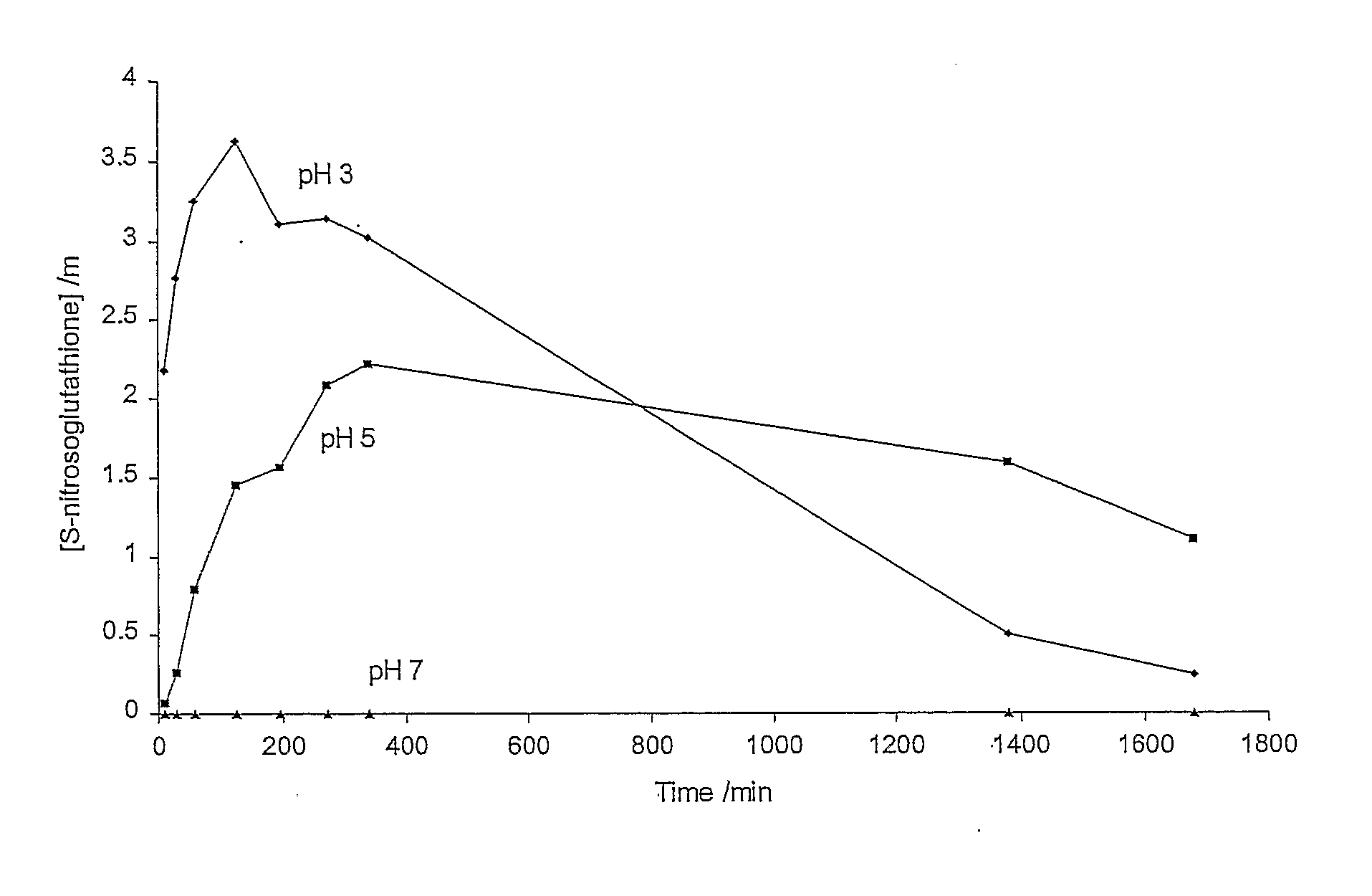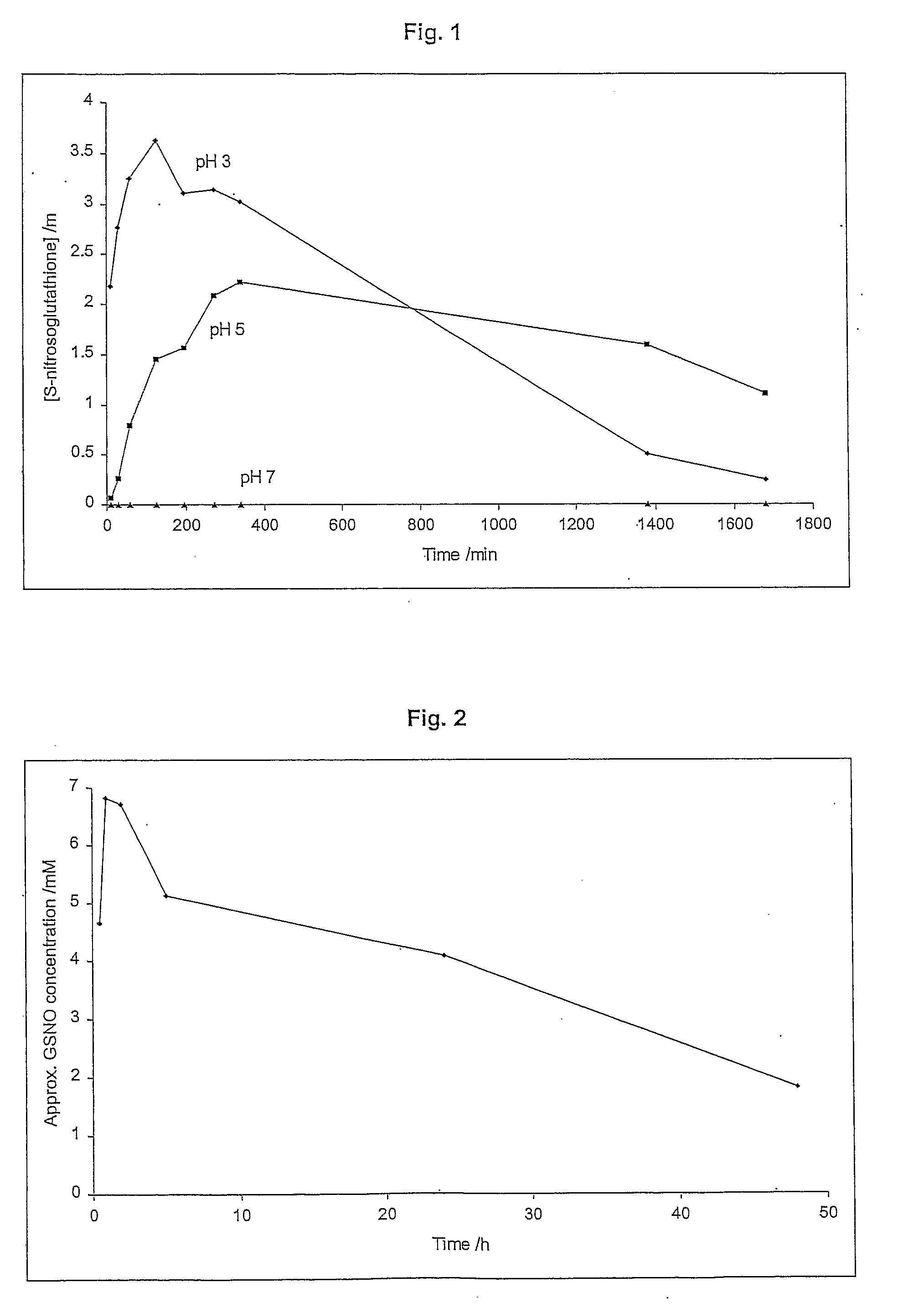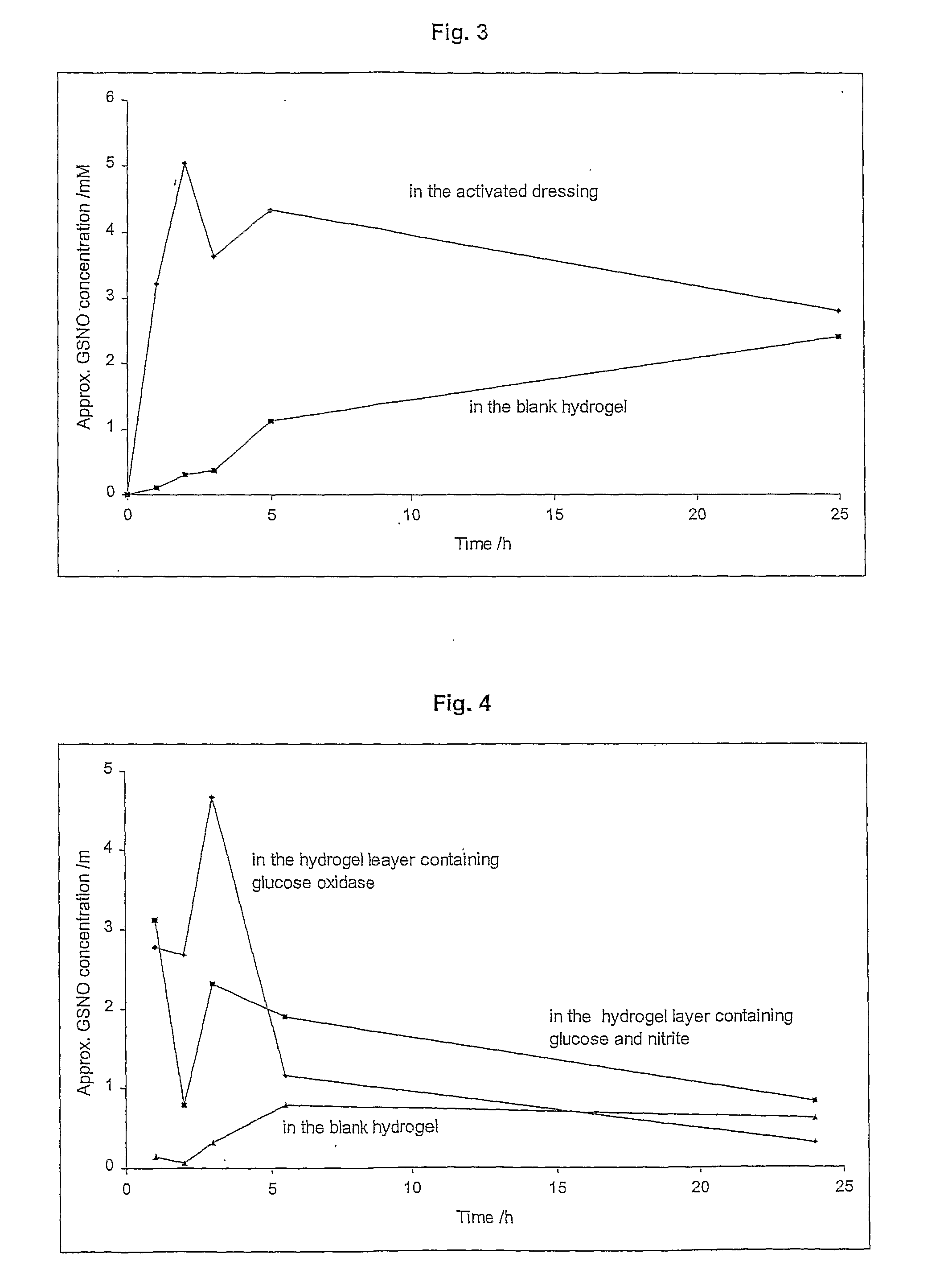Skin Dressings
a skin and skin technology, applied in the field of skin dressings, can solve the problems of nitric oxide, unable to cause the opposite effect, limited solubility in water, etc., and achieve the effects of increasing collagen formation, increasing the activity of enos, and increasing the importance of repair of damaged tissues
- Summary
- Abstract
- Description
- Claims
- Application Information
AI Technical Summary
Benefits of technology
Problems solved by technology
Method used
Image
Examples
example 1
Effect of pH on the Rate of Production / Degradation of GSNO in Aqueous System Containing L-Glutathione and Potassium Nitrite
[0144]The rate of the GSNO production and subsequent decomposition in solutions containing potassium nitrite (5 mM) and L-glutathione (5 mM) was studied at pH 3 (citrate-phosphate buffer, 0.1 M), pH 5 (citrate-phosphate buffer, 0.1 M) and pH 7 (phosphate buffer, 0.1 M). The results are shown in FIG. 1. No production of GSNO was observed at pH 7. The initial production of GSNO was slower at pH 5 compared with pH 3. The stability of GSNO produced appeared to be slightly higher at pH 5 compared with that at pH 3.
example 2
Generation of S-nitrosoglutathione in (Unbuffered) Activated Hydrogel Dressing
[0145]The concentration profile of GSNO in the activated dressing was measured in the absence of additional source of protons. The primary layer of the dressing consisted of poly-AMPS hydrogel containing potassium nitrite (30 mM). The secondary layer consisted of dried PVA (5%) containing L-glutathione (30 mM). There was no additional source of protons incorporated in the dressing. The layers were brought together to activate the dressing, and the results are shown in FIG. 2. The concentration of GSNO generated in the dressing peaked after approximately 2 hours. Then there was a slow steady decline in the concentration of GSNO due to its slow decomposition. GSNO was still measurable in the dressing 48 hours after the activation.
example 3
Release of S-nitrosoglutathione from Activated Hydrogel Dressing (with No Additional Source of Protons Incorporated) into a Blank Hydrogel
[0146]The primary layer of the dressing consisted of poly-AMPS hydrogel containing potassium nitrite (30 mM). The secondary layer consisted of dried PVA (5%) containing L-glutathione (30 mM). There was no additional source of protons incorporated in the dressing. The dressing was activated by bringing together the primary and the secondary layer. The activated dressing was placed onto a blank piece of hydrogel (30% poly-AMPS). The generation of GSNO inside of the dressing and its gradual release into the blank hydrogel was measured, and the results are shown in FIG. 3.
[0147]The concentration of GSNO in the activated dressing peaked approximately 2 hours after the dressing was activated. Then there was a slow steady decline in the concentration of GSNO due to its slow decomposition. A slow gradual release of GSNO from the activated dressing into th...
PUM
| Property | Measurement | Unit |
|---|---|---|
| Time | aaaaa | aaaaa |
| Time | aaaaa | aaaaa |
| Time | aaaaa | aaaaa |
Abstract
Description
Claims
Application Information
 Login to View More
Login to View More - R&D
- Intellectual Property
- Life Sciences
- Materials
- Tech Scout
- Unparalleled Data Quality
- Higher Quality Content
- 60% Fewer Hallucinations
Browse by: Latest US Patents, China's latest patents, Technical Efficacy Thesaurus, Application Domain, Technology Topic, Popular Technical Reports.
© 2025 PatSnap. All rights reserved.Legal|Privacy policy|Modern Slavery Act Transparency Statement|Sitemap|About US| Contact US: help@patsnap.com



